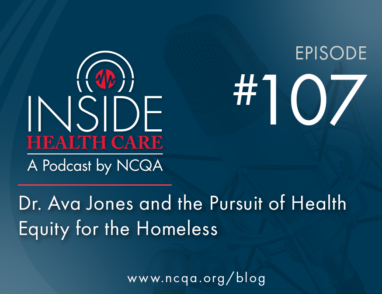Open Enrollment Season: Choose Quality
November 5, 2019 · Matt Brock
It’s that time of year again. Many of us have to choose a health plan for the upcoming year, at least for those of us whose employers provide a choice.
Of course, we all check costs, deductibles and co-pays. Some of us check if the plans’ networks include our physicians or practices. But how many check their plans for quality?
We hope more, now that they are equipped with our health plan ratings.
The National Committee for Quality Assurance (NCQA) composes its Health Insurance Plan Ratings to help consumers choose their health plan. The annual ratings provide consumers with a comprehensive and accurate list detailing how health insurance plans perform in the key quality areas of consumer satisfaction, prevention and treatment.
The ratings compare the quality and services of more than 1,000 health plans in the U.S. The analysis is presented as a practical and easy-to-read guide to help consumers understand their options in choosing the best health plan coverage for themselves and their families.
We set it all up to align with how the government measures performance. Our methodology is similar to the Centers for Medicare and Medicaid Services (CMS) five-star quality rating system to measure the health plan and healthcare system experiences of Medicare beneficiaries.
Of the studied 1,351 health plans, NCQA rated a total of 1,021 amounting to: 438 private (commercial), 412 Medicare and 171 Medicaid plans.
Top Ten States

The top 10 states with the highest percentage of highly-rated plans scoring 4.5 or 5.0 out of 5.0 rating and over a three-year average are as follows:
- Rhode Island
- Massachusetts
- Minnesota
- Maine
- Wisconsin
- Hawaii
- New York
- Iowa
- Maryland
- New Hampshire
Two more key takeaways from this year’s ratings are:
- States with the top performing plans consistently deliver. Over the last three years, the 10 states with top performing plans reportedly experienced little movement. One exception is the state of New Hampshire, which ranked seventh in 2017 and dropped to 11th and 10th place, respectively, in 2018 and 2019.
- High and low performers are rare. Of the 1,021 rated plans, 79 or 80 percent received a top rating of 4.5 or 5.0 out of 5. Sixteen or 2 percent earned the ratings of 1.0 to 2.0.
NCQA rates performance in three primary categories:
- Consumer Satisfaction: Assesses patients’ feedback ranking their health plans in satisfaction surveys, including the processing of claims and customer service.
- Prevention: Gauges patients’ ranking of annual visits, flu vaccinations, screening tests, dental cleanings, well-woman appointments and other types of preventative care services that keep people—especially children and adolescents—healthy.
- Treatment: Measures a plan’s consistency in providing scientifically recommended care for common but costly chronic conditions such as diabetes, depression, asthma and heart disease.
In each of the three categories, the health outcomes resulting from a patient’s care contribute extra points to the scoring; for example, the probability of blood pressure and blood sugar levels are controlled to safe and recommended levels.
Yeah, it’s that time of year again, but now your friends and family have new information to assist with their choices. That is if you pass it along. Share this blog. Help them make an informed choice. Help them make a quality choice.








